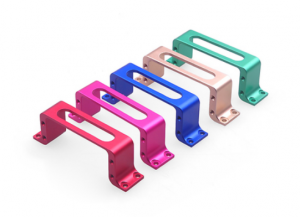Phosphoric Acid for Aluminum Parts
Phosphoric acid is used in pretreatment of glued aluminum parts. In the past 30 years, researches on phosphoric acid anodization has paid more attention to the use of phosphoric acid anodization as pretreatment of aluminum workpiece bonding. At present, it has been widely used in aviation industry.
Boeing conducted the earliest research in this field, first using F. P. L etching process, phosphoric acid anodizing after water washing. The binding force of the obtained phosphoric acid film and the adhesive is higher than that of other pretreatment films and the adhesive.
The reason for the high binding force of the phosphoric acid film and the adhesive is that the phosphoric acid film has strong water resistance, which prevents the adhesive from aging due to hydration. It may also be because the phosphoric acid film has an interlocking film structure with the adhesive.
Aluminum and aluminum alloys have the advantages of good mechanical properties and light weight, and have been widely used in various industries, especially in the aerospace field, which has high requirements for lightweight. The connection between aluminum alloy components can be mechanically connected or glued.Gluing has the advantages of small structural weight gain, short time, low cost, high bonding efficiency, and no new stress concentration on the glued components, and is widely used.
Due to the strong affinity between aluminum and oxygen, even in dry air, 2~3nm thick non-porous amorphous Al2O3 will be quickly formed on the clean aluminum surface. The surface should be treated with necessary treatment during bonding.
The surface treatment of aluminum alloy components is a transformation process. Its main function is to remove the material on the surface layer, avoid bonding on its weak oxide layer, change the surface morphology, increase the surface area and increase the surface energy, and enhance the mechanical on the bonding interface. Meshing
Different surface treatment methods can be used for the bonding surface of aluminum alloy components. Generally can be divided into two categories: mechanical physical methods and chemical methods. The cleaning and degreasing of the aluminum surface with solvents, sandpaper and emery cloth polishing, sandblasting and mechanical processing belong to the former category; while chromium sulfuric acid etching (ie FPL or CSA method), NaOH solution etching, and sol-gel treatment And anodizing treatment (including SAA, CAA, PAA, etc.) and other methods belong to the latter category. These methods can be used alone or in combination, and the specific method to be used should be determined according to the characteristics of the aluminum material and the requirements for bonding performance

